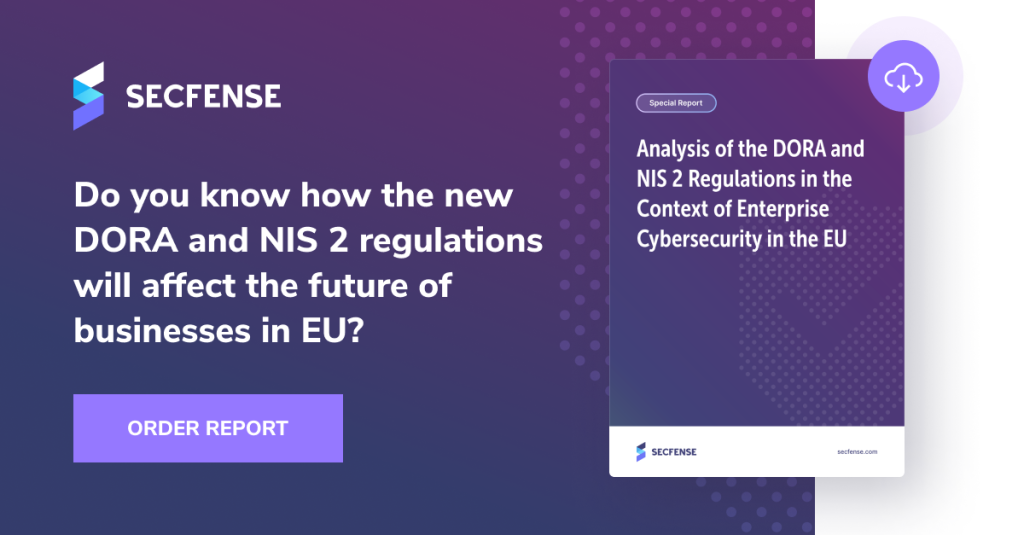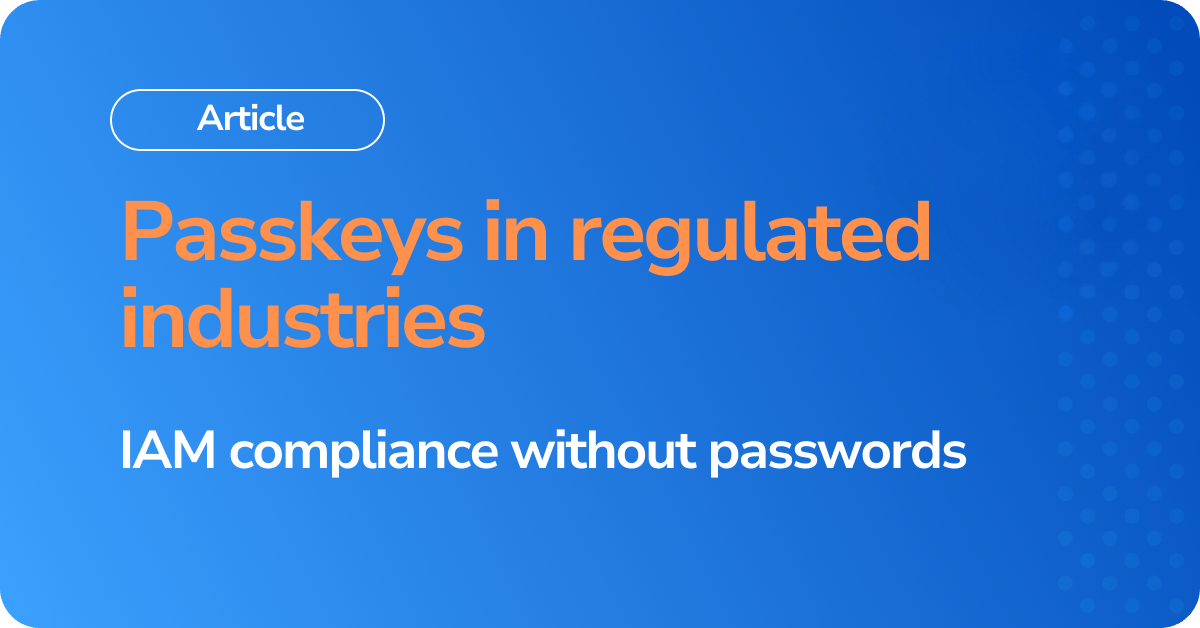Regulated industries such as banking, healthcare, and public administration face stringent identity and access management (IAM) requirements driven by regulations including PSD2, HIPAA, NIS2, and DORA. These regulations demand strong customer authentication, secure credential handling, and robust access controls to safeguard sensitive data and ensure operational resilience. Traditional password-based IAM systems are increasingly inadequate for these demands due to their vulnerability to phishing, credential theft, and user friction.
Passkeys, rooted in the FIDO2/WebAuthn standards defined by the FIDO Alliance, offer a passwordless, phishing-resistant authentication method that aligns with regulatory mandates. Leveraging Secfense’s identity and access management software and services enables regulated organizations to adopt passkeys securely and compliantly, often without intrusive changes to their existing infrastructure, as detailed in Secfense’s technical whitepapers on hybrid passwordless authentication and the integrated authentication system.
Regulatory Compliance Challenges and Passkeys
PSD2 and DORA in Banking
The Payment Services Directive 2 (PSD2) mandates Strong Customer Authentication (SCA), requiring at least two independent factors (knowledge, possession, inherence) to authenticate payment transactions and account access. PSD2 emphasizes secure credential confidentiality, integrity, and fraud resistance. The Digital Operational Resilience Act (DORA) complements PSD2 by imposing rigorous operational requirements on financial entities, including strict IAM and multi-factor authentication controls to guarantee cyber resilience (European Commission PSD2, European Commission DORA).
NIS2 Directive for Critical Infrastructure and Public Administration
The NIS2 Directive enforces cybersecurity duties for operators of essential services and digital service providers. It prioritizes zero-trust security models, continuous risk evaluation, and stringent IAM policies ensuring confidentiality, integrity, and availability of network systems (European Digital Strategy – NIS2).
HIPAA in Healthcare
HIPAA requires entities to apply strong access controls, audit mechanisms, and technical safeguards to protect electronic Protected Health Information (ePHI). This includes ensuring that only authorized users gain electronic access to health data (HIPAA Security Rule).

How Passkeys Meet These Regulatory Requirements
Strong Phishing-Resistant Authentication
Passkeys employ asymmetric cryptography: private keys never leave the user device, thus preventing interception or replay attacks. Authentication challenges are signed locally, meeting PSD2’s SCA strong authentication and HIPAA’s integrity requirements. This approach eliminates the risks associated with shared secrets like passwords (FIDO Alliance – FIDO2).
Multifactor Authentication Built-In
Passkeys inherently combine device possession and either biometrics or local PIN for identity verification, fulfilling multi-factor authentication mandates across PSD2, DORA, NIS2, and HIPAA frameworks (FIDO Alliance).
Secure Credential Lifecycle and Auditability
Secfense’s IAM solutions integrate hardware-backed security modules—such as Trusted Platform Modules (TPMs), Secure Enclave, or hardware tokens (e.g., YubiKey)—for secure credential generation, storage, and revocation. These processes enable detailed audit trails required for compliance and enhance credential integrity (Secfense Hybrid Passwordless Authentication Whitepaper).
Seamless and Compliant Integration with Secfense
By operating at the network layer and integrating with existing identity providers through protocols like SAML and OpenID Connect, Secfense enables gradual, non-intrusive adoption of passkeys in hybrid IAM architectures. This preserves legacy authentication methods during transition periods while meeting ongoing compliance and operational requirements (Secfense Integrated Authentication System Whitepaper).

Sector-Specific Compliance Benefits
- Banking: Passkeys satisfy PSD2 and DORA by securely combining possession and inherence factors, enabling strong, user-friendly, phishing-resistant authentication that reduces fraud and helps financial institutions meet stringent regulatory standards (European Commission PSD2, Secfense BNP Paribas Case Study).
- Healthcare: Passkeys support HIPAA’s requirement for strong access controls and technical safeguards by ensuring granular, cryptographically verifiable access to ePHI, combined with comprehensive auditing capabilities (HIPAA Security Rule, Secfense Integrated IAM).
- Public Sector and Critical Infrastructure: Passkeys facilitate compliance with NIS2’s zero-trust and continuous monitoring mandates by providing tamper-resistant authentication methods that strengthen security postures and reduce risk of breaches (EU NIS2 Directive, Secfense Hybrid Passwordless Authentication).

The Path Forward: Embrace Passwordless IAM
Passkeys, standardized by the FIDO Alliance and implemented using Secfense’s enterprise-grade IAM software and services, offer a secure, scalable, and compliant alternative to passwords in regulated industries. By eliminating password vulnerabilities and integrating strong multifactor authentication seamlessly, they empower banking, healthcare, and public administration organizations to meet and exceed regulatory requirements like PSD2, DORA, NIS2, and HIPAA.
Secfense’s codeless, agentless, and standards-based approach enables quick deployment and operational continuity without requiring application rewrites or infrastructure disruption, making passwordless IAM a practical reality for compliance-driven enterprises today.
The Path Forward with Secfense
Identity and access management is strongest when it combines security, compliance, and usability. Passkeys deliver phishing-resistant, regulation-ready authentication, but introducing them into complex, regulated environments requires more than technology. It requires a way to integrate without rewriting applications, disrupting critical systems, or delaying compliance initiatives.
That’s where Secfense comes in. Our User Access Security Broker (UASB) enables passkeys, MFA, and other strong authentication methods across any application, legacy or modern, without code changes, agents, or downtime. By acting at the network layer, Secfense helps regulated organizations:
- Meet compliance mandates (PSD2, HIPAA, NIS2, DORA) with strong customer authentication, full audit trails, and lifecycle documentation.
- Modernize IAM securely by layering passwordless flows on top of existing identity providers and applications.
- Reduce risk and operational costs by eliminating passwords, simplifying user experience, and minimizing helpdesk overhead.
- Scale quickly with phased, opt-in rollouts and hybrid deployments tailored to your environment.
👉 Schedule a call with Secfense to see how your organization can deploy passkeys securely, meet regulatory requirements, and accelerate your journey to passwordless IAM.
⁂
Sources
- Secfense Technical Whitepaper – Hybrid Passwordless Authentication
- Secfense Technical Whitepaper – Integrated Authentication System
- FIDO Alliance – FIDO2 and Passwordless Authentication
- European Commission – PSD2 (Payment Services Directive 2)
- European Commission – DORA (Digital Operational Resilience Act)
- European Commission – NIS2 Directive
- HIPAA Security Rule – U.S. Department of Health & Human Services
